I’ve been waiting for a bright sunshiny day to thoroughly examine this tightly-woven linen satin dräll fabric. Today is perfect. Fixing errors must be done before the fabric is washed, when the weave will become even tighter. I am looking for unwanted floats where the shuttle skipped threads, and for loops at the selvedges.
In my examination I did find an errant float and a few small selvedge loops. Let’s get started.
Tools:
- Blunt-tip needle. Sharp needle tip has been sanded to a rounded tip.
- Thread. Use the same weft or warp thread that is in the area needing repair.
- Good lighting. If the fabric has a complex structure, good lighting is essential.
- Magnification. I take a photo on my iPhone, and then zoom in to see the minute details.
How to Mend Skipped Threads:
1 Locate the error. Here is a long weft float.
2 Thread the blunt-tip needle with a length of the same thread as the float.
3 Following the exact under-over pattern of the weave, start one inch before the float and needle-weave toward the float. I lay my iPhone nearby, with the magnified iPhone photo clearly showing the weave pattern.
4 Needle-weave the correct path of the thread through the float area. Continue needle-weaving along the same thread pathway, going one inch beyond the float.
5 Check the front and back of the fabric to see if your stitches match the correct pattern of the weave.
6 When you are certain that the float thread has been accurately replaced, clip the float and remove it (or, leave it and trim it after washing). Leave two-inch tails on the replacement thread, and trim after wet finishing. (I leave the replacement tails so I can find and check the repair after it is washed. This also allows for shrinkage before trimming.)
How to Fix a Small Selvedge Loop
1 Locate the loop.
2 Using the blunt-tip needle, gently ease the excess thread to spread over four or five stitches inside the selvedge.
3 The thread that has been eased in (just above the needle) will completely smooth out in wet finishing.
What skipped threads and loops would be found if I were examined this closely? Would I leave them and hope no one notices? Or, would I allow re-weaving and cutting away? A negative attitude is replaced with a thread of thankfulness. A loop of complaining is eased back in. The result is joy. A thankful heart knows joy. When the fabric is washed, the errant floats and loops are gone. What remains is the woven fabric with lustrous threads of joy.
May you have a bright sunshiny day.
With you,
Karen

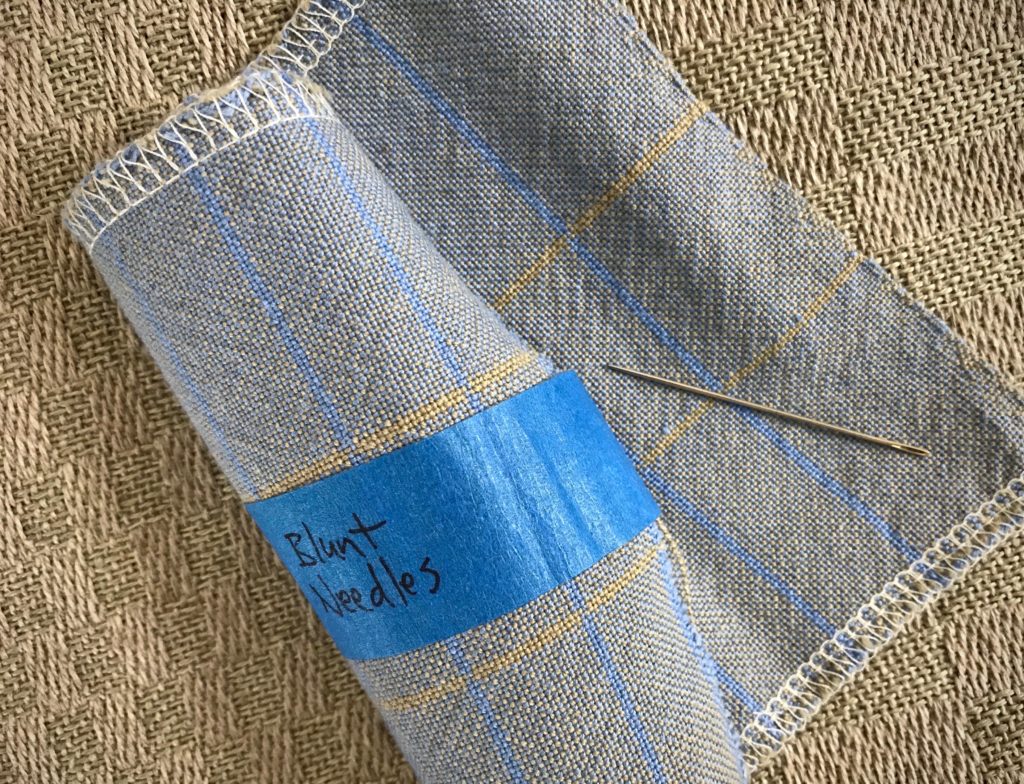
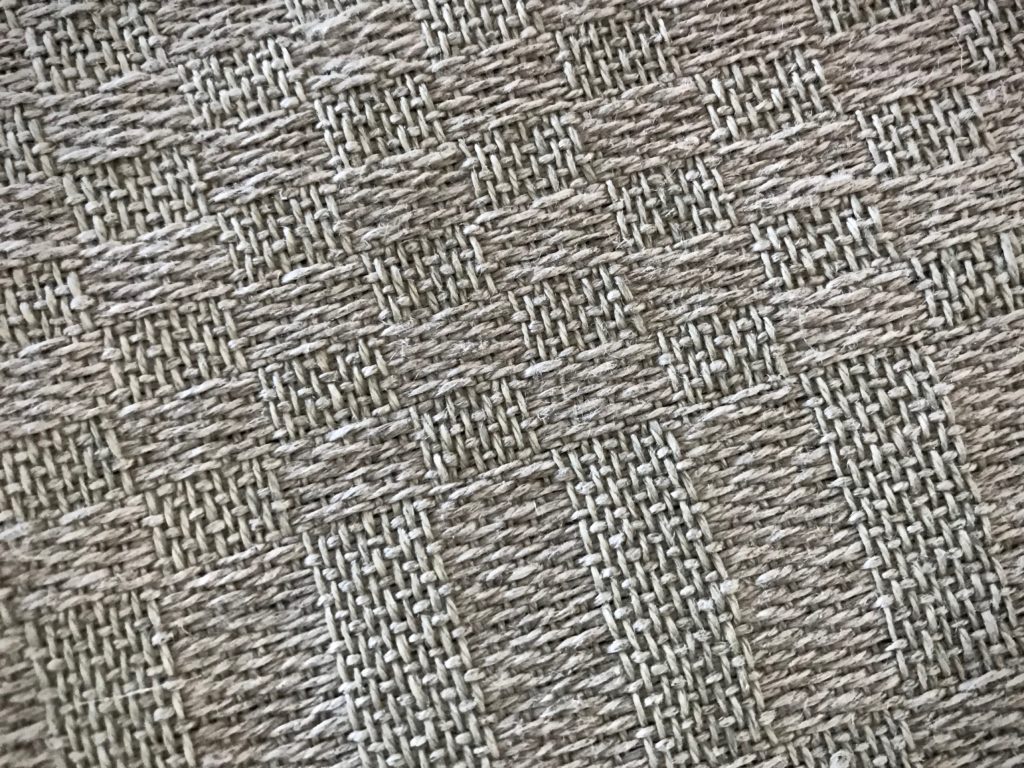
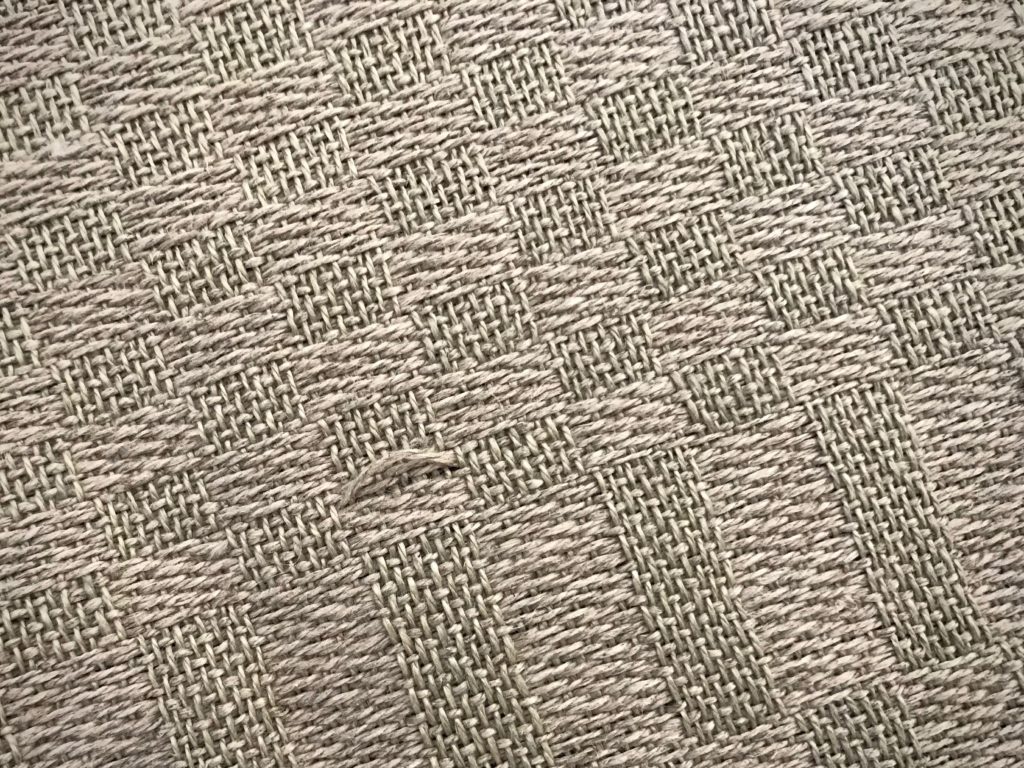
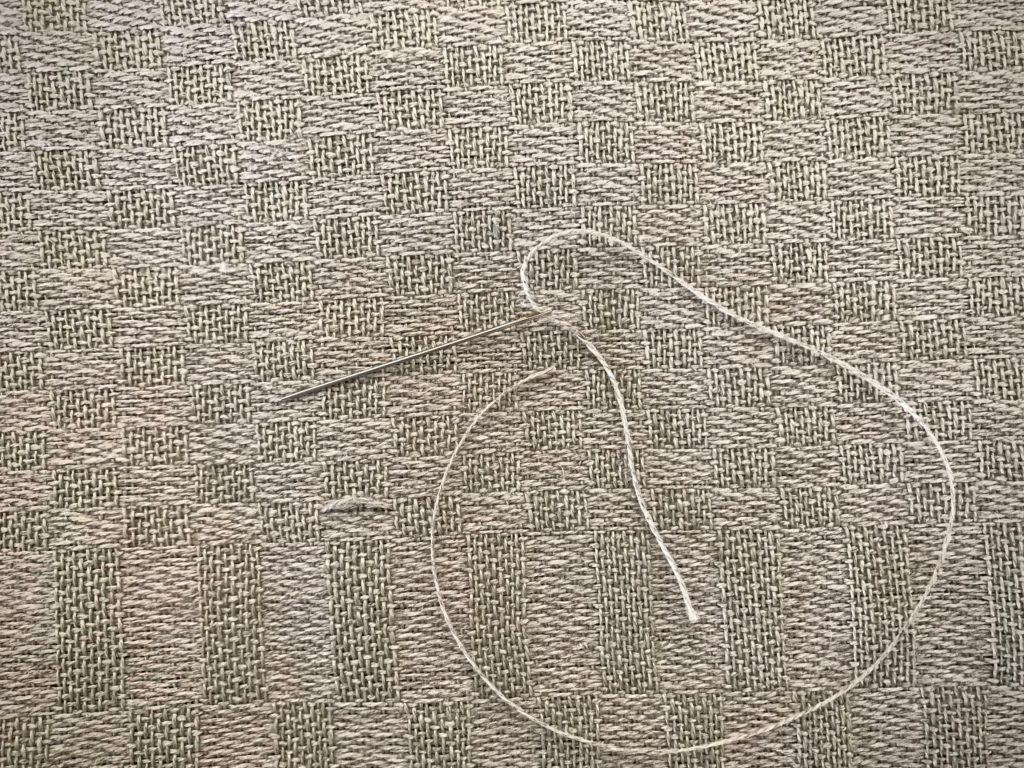
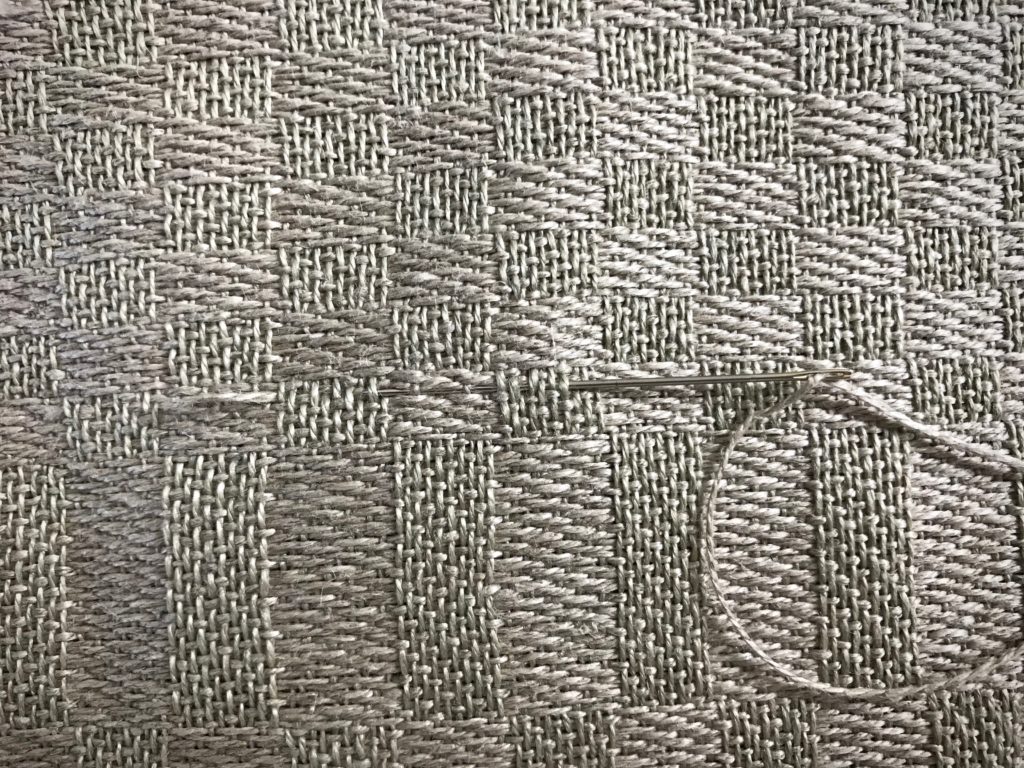
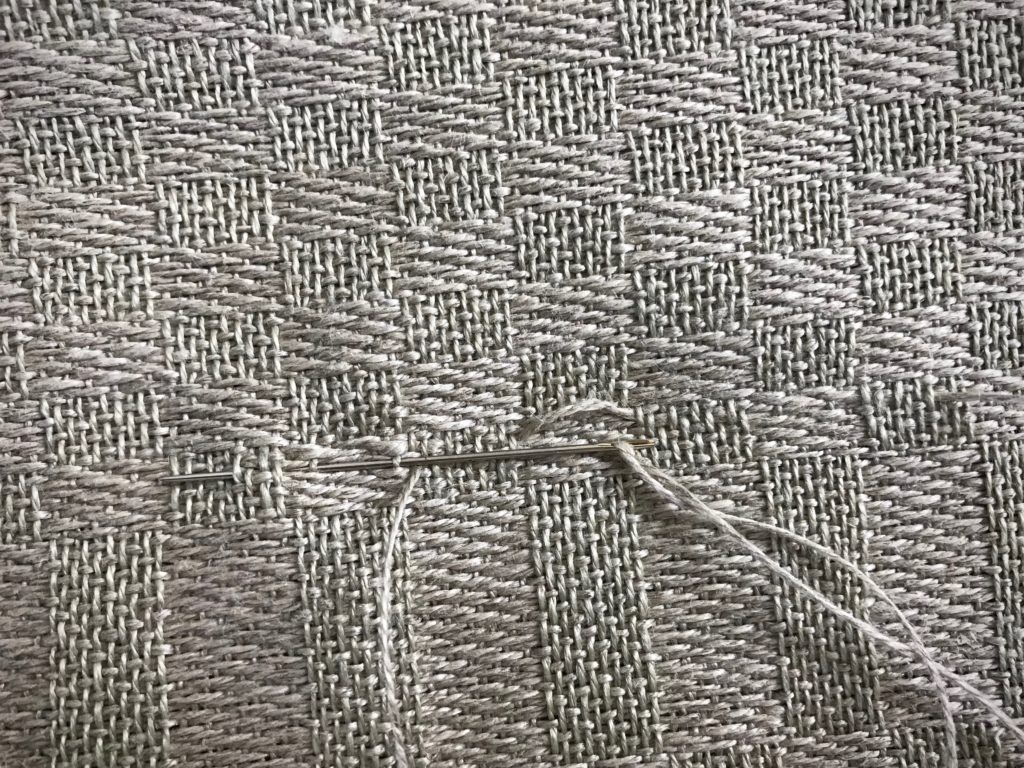
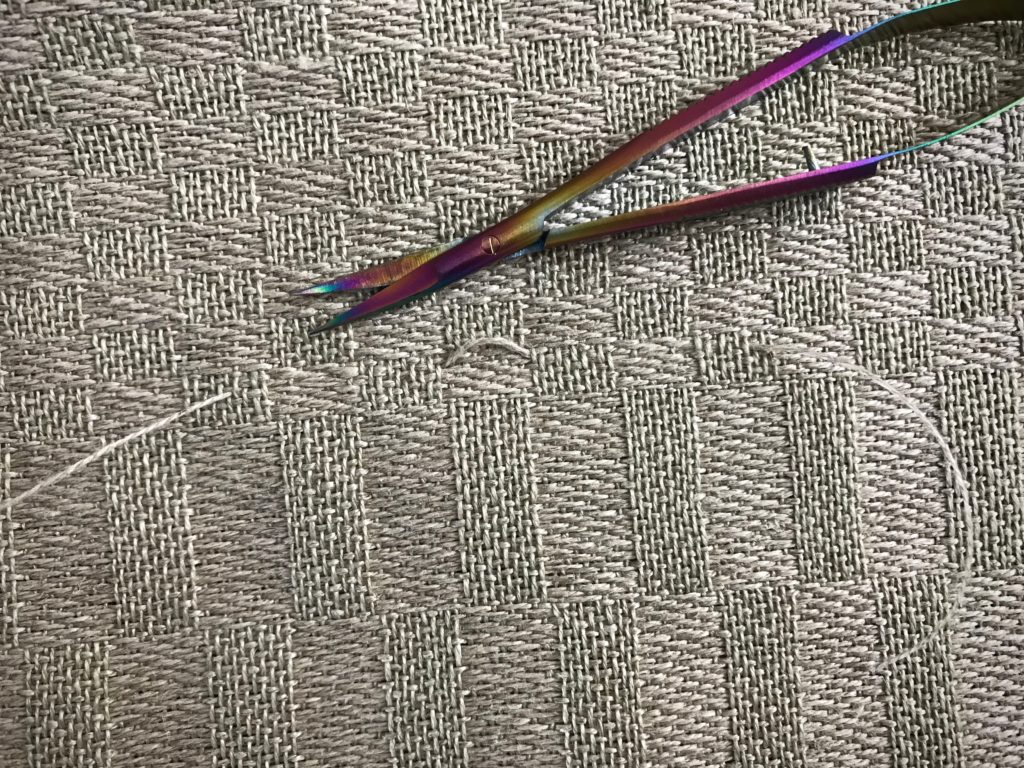
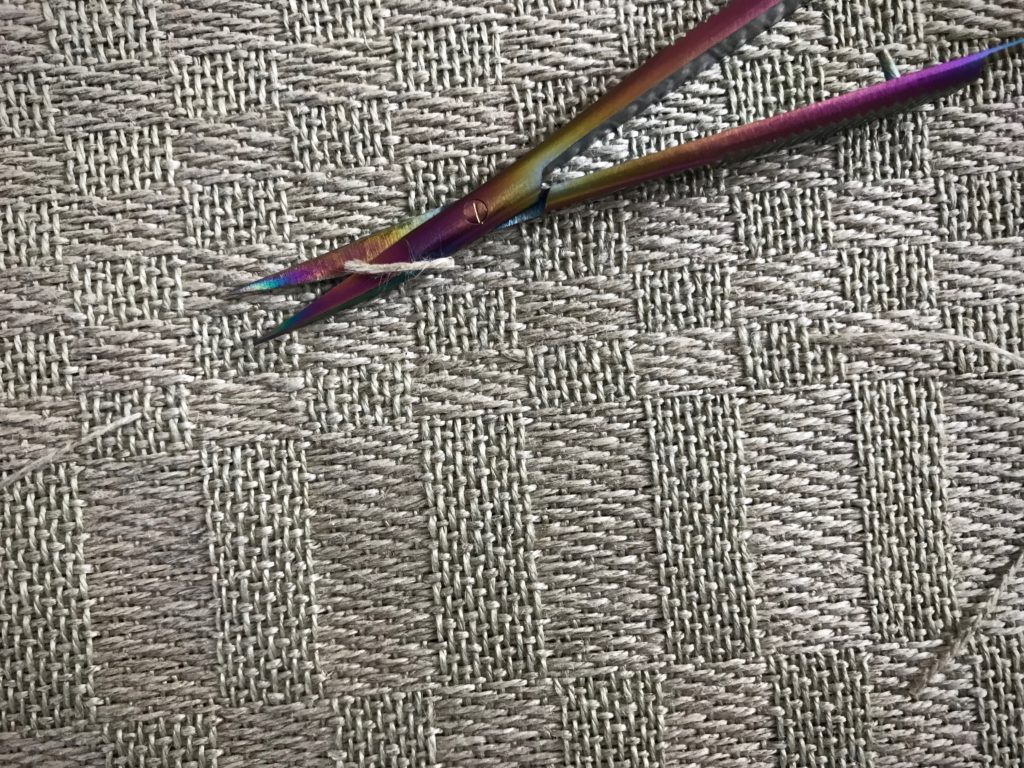
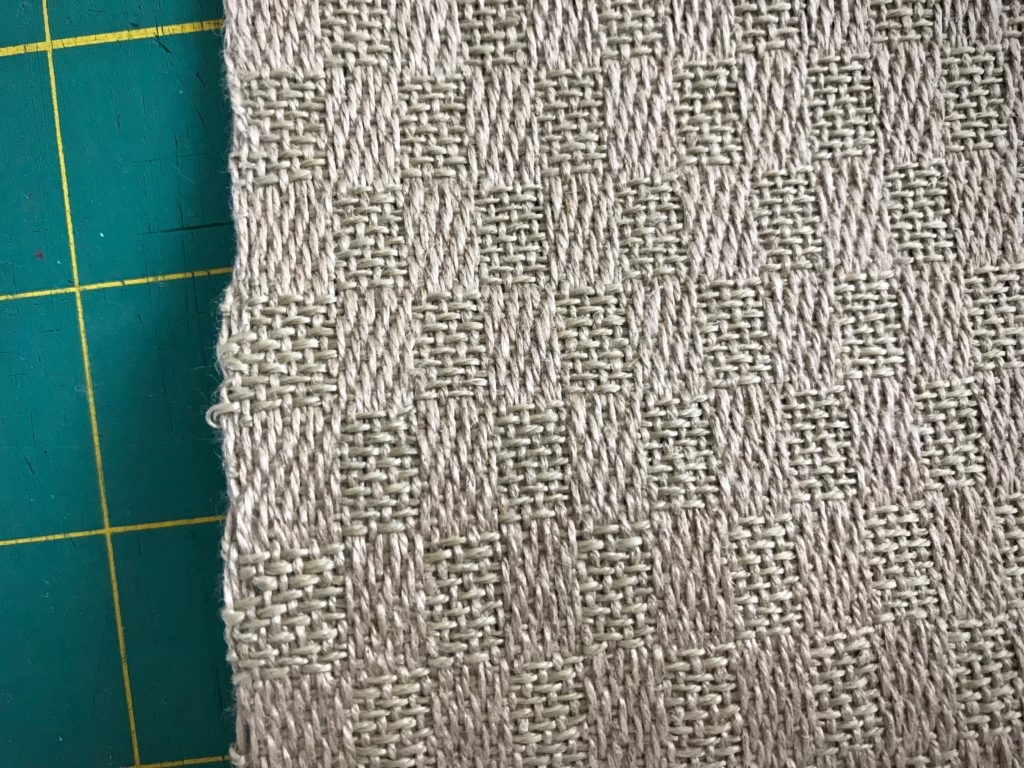
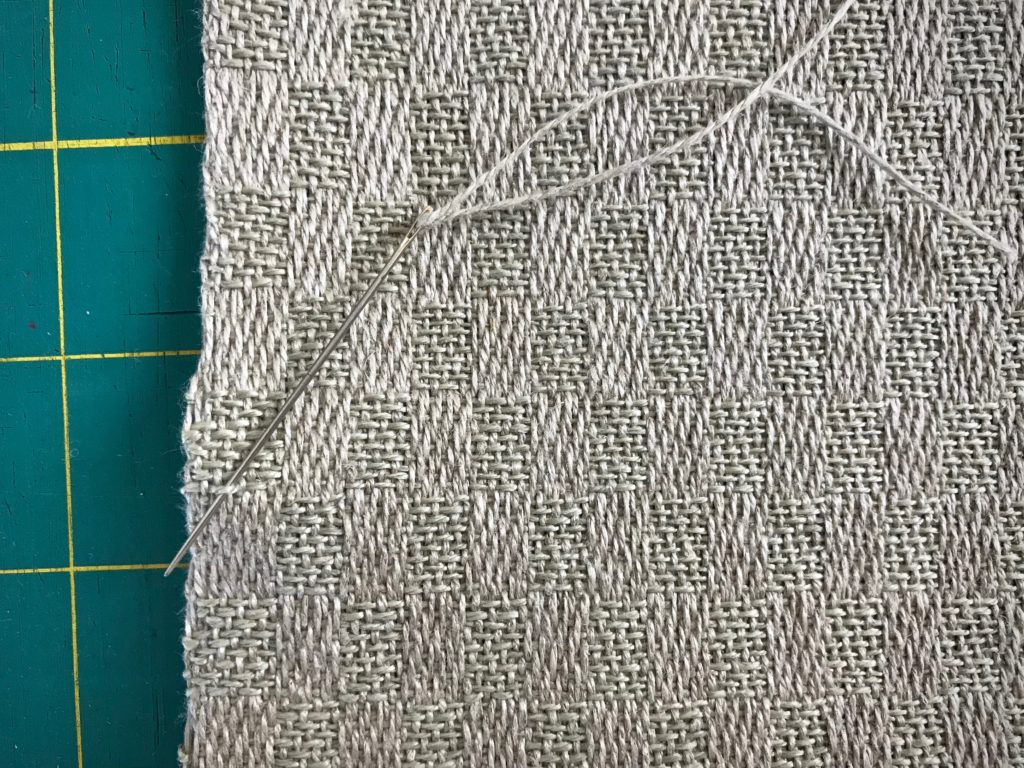
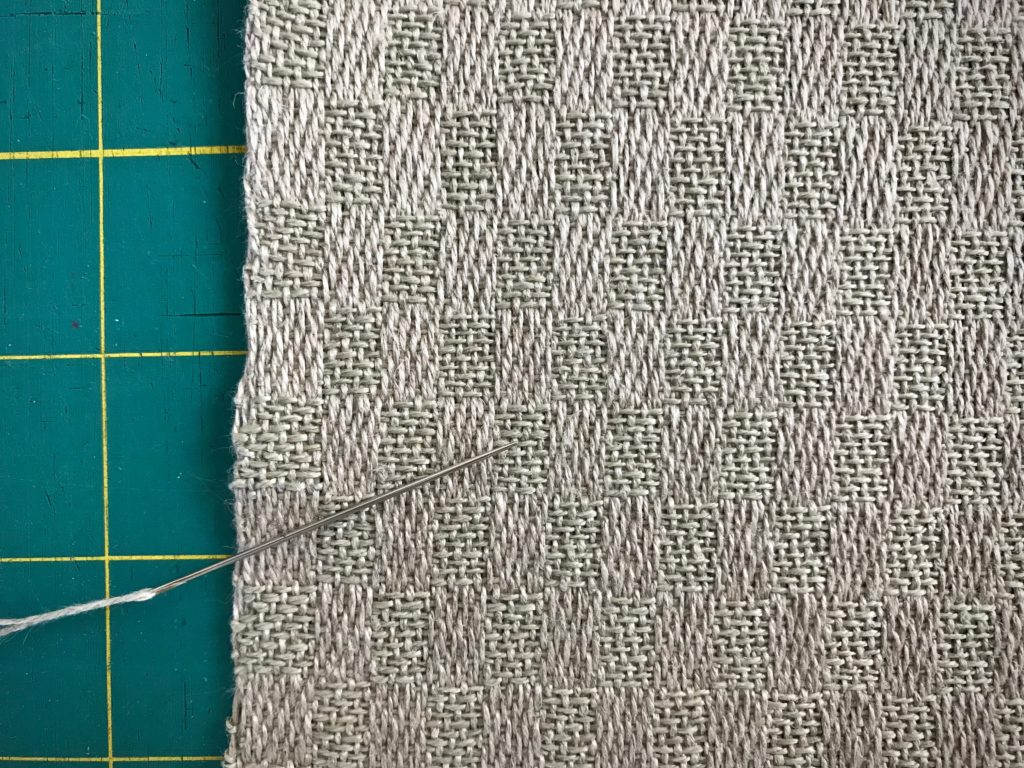
Re-weaving and cutting away in life – what a great analogy.
I am fascinated by your snips (scissors). Are they surgical snips? Those curved blades! I’d love a pair of my own.
Here’s to a day full of joy!
Hi Beth, Finding those personal flaws can be a little painful for me, but putting in a better thread is worth it.
These snips with curved tips work great! I found them at a vendor at the quilt festival in Houston a few years ago. I picked up another similar pair at a needlework shop a couple years ago.
Joy to you!
Karen
Good morning, Karen! I loved your analogy! The lazy part of me would think no one might notice because change is difficult. But then the good Catholic guilt takes over and I must do something about myself!
The same with corrections in my weaving. My first thought is will anyone really see that? But I can’t unsee it, so it must get fixed!
One thing I never knew though, was that the loopy selvedges could be corrected. Thank you for sharing this technique, Karen. I am always eager to learn how to improve and correct, though I sometimes have to do a bit of self talk first!
Enjoy the sun today.
Hi Annie, The wonderful thing about grace is that someone greater than us does the fixing. He can see clearly what needs to be done.
You are right about not being able to unsee a flaw. If there is something I can do about it, I will. If it can’t be fixed, then, I will chalk it up to the reality of being handmade.
The loop I showed here would probably correct itself in the wash, but it wasn’t hard to ease in the thread, so I did.
Happy to have another day with sunlight!
Karen
Beautiful piece and I like what you say at the end! Bless You!
Mary
Hi Mary, It’s a true pleasure to have you drop in with such kind words.
All the best,
Karen
You are a gifted writer as well as weaver. Thank you for sharing both!
Hi Linda, It feels like a privilege to me to be able to weave and write and have someone like you show interest. Thank you!
All the best,
Karen
Life is but a Weaving” (the Tapestry Poem)
“My life is but a weaving
Between my God and me.
I cannot choose the colors
He weaveth steadily.
Oft’ times He weaveth sorrow;
And I in foolish pride
Forget He sees the upper
And I the underside.
Not ’til the loom is silent
And the shuttles cease to fly
Will God unroll the canvas
And reveal the reason why.
The dark threads are as needful
In the weaver’s skillful hand
As the threads of gold and silver
In the pattern He has planned
He knows, He loves, He cares;
Nothing this truth can dim.
He gives the very best to those
Who leave the choice to Him.
… as quoted by Corrie ten Boom
Hi Marion, That is such a meaningful poem. Thanks for sharing!
Karen
Thanks! Very helpful and encouraging.
Hi Virginia, I’m glad you have been encouraged.
All the best,
Karen
Hi Karen,
I’m so glad I found this blog – and this entry in particular! I’m a mostly self taught weaver although I did have a weaving friend teach me the basics. I have asked her what to do about skips and she had told me they are not repairable and the woven fabric cannot be saved. I don’t know how many times I have taken a piece of fabric off the loom in absolute disgust with myself thinking all that time, energy and money wasted!!! That being said I just repaired a blanket with success – thank you!!
Hi Michelle, Bravo for repairing your blanket with success!! One of the things I like most about weaving is that just about EVERYTHING is fixable. That’s a good thing, too, considering the number of mistakes I make. I always check for flaws before I wash a new item.
I am thrilled that you have a new way of looking at flaws that come off the loom! Thank you for writing such a happy message.
Happy Weaving,
Karen
Do you know of a way to correct a skip with some kind of splicing tool? I’m making a loose weave blanket with
tonos worsted — noticed an error 20″ back. Anything up to about 6″ back and I would go back to fix it.
Thanks for all your good information
Hi Robert, I am not aware of a splicing tool. It’s not something I’ve ever seen or heard about. You should be able to correct your skip after the cloth is off the loom. You could mark it by sewing in a piece of contrasting thread so you can find it easily later. I would suggest repairing the skip in the way I show in this article. Since your blanket is a loose weave, you would want to needle-weave the correct thread for long enough that it will be secure after you cut the float, making sure you have a good overlap with the woven weft. When you wet finish the blanket, the needle-woven correction should hold.
I hope that helps!
Karen